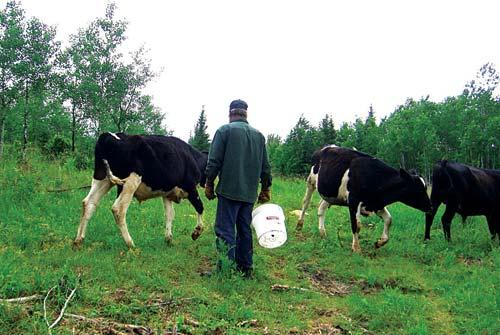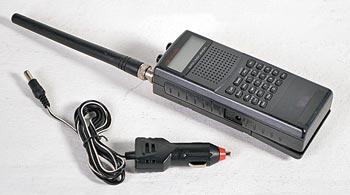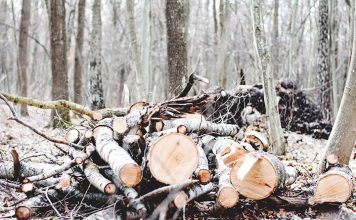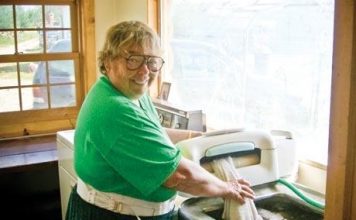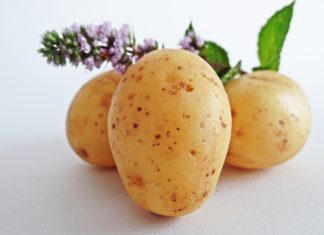 |
|
| Issue #148 • July/August, 2014 |
I come from a “penny-pinching-and-proud-of-it” family background and I learned the importance of saving a buck at an early age. Throughout my journey toward a self-reliant lifestyle, I’ve gained a lot of valuable insight into the hundreds of ways to save money in daily living as well as ways to save for those larger projects in the future.
Grow your own food
It’s said that the “typical” American family of four spends approximately $500 a month for food and household supplies. I don’t think we spend that much in a year, including toilet paper.
How do we get by so cheaply in the food department? Those of you who know us through BHM know we grow a huge garden from which we can and dehydrate hundreds of jars of nutritious, quality food every year. We eat plenty of fresh food in season, too.
We’ve established a nice-sized orchard and berry patch, along with grapevines and an asparagus patch. Apples, plums, pie cherries, extremely hardy pears, blackberries, red and black raspberries, strawberries, and Manchurian apricots all grace our northern Minnesota homestead.
We have a modest-sized flock of chickens and a few turkeys that range our orchard, eating bugs, grass, clover, and any fallen fruit. In exchange, they give us all the eggs we can eat (and trade or give away), meat for the table, and a few birds to trade on occasion.
Will and I invested in a family milk cow. Lace is a milking shorthorn and she freshened for us on our wedding day. She is not only raising her huge, gorgeous bull calf, but is also providing us with milk for the house. I make butter and lots of cheeses to serve family and visitors. Any whey that is left over goes to our pigs and chickens.
For the past three years, we’ve been buying baby Holstein calves to bottle raise. Last year, we butchered our first steer and we have another big steer ready to butcher when the rest of last fall’s meat is used up. We raise the “extra” calves for a year and sell them in the spring when prices are high. That pays for a lot of the feed for the ones we butcher, so the price to us for that meat is very low less than $1 a pound. I also save the fat from the butchered steers to render and use for making soap. I boil the “good” bones for beef broth (which I home can) and I save the raw bones and any organ meat we don’t eat for our two dogs.
We have begun to raise a few pigs to butcher not too many, only two gilts and a barrow (castrated male). We had such a hard time finding weaned pigs to buy and raise to eventually butcher that we finally bought two gilts to raise up and breed. Now we will always be able to have a couple of butcher pigs to raise, and then we’ll sell the rest. These pigs eat hundreds of pounds of garden “waste” such as weeds, over-mature summer squash, fallen tomatoes, canning by-products, extra milk and whey from our cow and goats, table scraps, and day-old bread from bakeries.
Every couple of years, we work up a decent-sized plot and plant wheat. It’s amazing how much wheat you can grow from a spot on one side of your garden or on a “waste” spot you aren’t using. We’ve planted wheat in our newly-planted orchard, beside the driveway, and in newly-turned garden plots, and have harvested several hundred pounds of wheat. Since wheat stores for a long time in an enclosed, airtight container (we use garbage cans), we don’t have to plant every year to ensure plenty of wheat to grind.

By home canning, you can save tons of cash
and eat gourmet-quality food that’s right at your fingertips.
Groceries
I know that many families live on more modest homesteads (or in town) and can’t raise as much food as we do. Not everyone has room for a cow, steer, or pigs. But even if you have to buy a lot of your food, there are plenty of ways to save money while doing it.
I try to never buy any food unless it is on sale and a good sale, at that. I always buy items before I need them and store the extras in my pantry.
Know your prices. Recognize a good sale price on items; buy several and stock up, even if you don’t need them right now. For example, if I’m running low on sugar and it’s on sale, I don’t just buy 10 pounds I buy 30 pounds and store it. Then I might hit another good sale on sugar and buy another 30 pounds, and rotate that into my pantry. Or if the sales aren’t so hot, I might go to Sam’s Club once every six months or so and buy 50 pounds.
Know when a sale is a good sale and when it’s just an advertising ploy. Remember, you are only buying ingredients to recipes and ingredients are cheaper than all those pre-made foods.
Don’t buy pre-processed food. The more a food is processed and the more packaging it has, the more expensive it usually is. Take cornbread mixes, for instance. I can whip up a big batch of cornbread that will last for two meals in less than five minutes for a total cost of 25 cents (remember, we have our own eggs and milk). A not-so-jiffy cornbread mix costs 59 cents and takes the same amount of time to mix up, but makes only a very small batch.
How about frozen pizza? Yes, it’s quicker to make. But I can make a pizza, from start to oven, in about 15 minutes, including the crust. Mine is not only much cheaper, but is also loaded with our own home-canned pizza sauces, garlic, onions, peppers, herbs, and re-canned #10 cans of sliced black olives and sliced mushrooms (when I haven’t harvested wild ones lately). I make terrific Mozzarella cheese to go on top, and I also can pepperoni, sliced ham, and Canadian bacon, so we always have them available. My toppings are thick and gooey; store-bought pizza can be thin and tasteless. Yep, the frozen ones are quicker but not by much. And mine will make your mouth water.
My exception to never buying processed foods is this: I do often buy cake mixes, pre-packaged stovetop stuffings, dehydrated potato mixes such as potatoes au gratin, and Rice-A-Roni. But only when they go on sale for a dollar or less. These store well in my long-term storage pantry and are quick foods that I can’t duplicate much cheaper and would cost nearly the same if I did.
Store-bought, pre-packaged, frozen foods are an even worse value. I can put together a family-sized pot pie in about 10 minutes, including the crust. My total cost is about 38 cents to buy just the flour and shortening. Even if I were to buy all of the ingredients and use some leftover chicken or beef, the total cost would be about $1.24 for four very generous-sized pieces of pot pie with a thick, flaky crust full of vegetables and meat you can actually recognize. Today a cheap, single-serving frozen pot pie is about 59 cents. Multiply that by four and you have $2.36 for pot pies with thin, tasteless crusts, a few vegetables, and a few chunks of unidentifiable meat.
Begin seriously canning foods. What is serious canning? Serious canning is putting up steady amounts of food, all year long. Serious canning saves your family tons of money and lets you eat so much better, year-round. And if an emergency situation occurs (be it loss of a job, a power outage, a hurricane, or a terrorist attack), you have plenty of gourmet-quality food stored right at your fingertips.
Stock up and can seasonal meat. I pick up turkey, hams, and other meats when they are on a very good sale, and then can them up right away. For instance, about two to three weeks before Thanksgiving, turkeys are often on sale for way less than it costs us to raise them. Of course, ours are tastier, but I still buy a couple of on-sale turkeys to use in mixed recipes.
Likewise, about two to three weeks before Easter, hams go on sale. I’ll buy several and then can ’em up at once. I do ham slices, chunks, and dices for quick, mixed dishes, then boil up the bone with meat on it to make baked beans, bean soup, and boiled dinners (to eat or to can). Not only do I end up with lots of good meals from one on-sale, cheap ham, but I’ll also end up with a dozen pints of baked beans and ham, bean soup with ham, or boiled dinner, too, making more meals-in-a-jar. Typically, I’ll get about 24 meals from one cheap ham. Can’t beat that with a stick!
Sometimes, I buy whole pork loin on sale at a real good price. I’ll buy one or two, roast one to eat (roast pork loin one day, pulled pork barbecue another, and pulled pork fried up with potatoes and onion the last), and another to can up. One pork loin will yield at least a dozen pints of canned pork and broth, which will make more than a dozen meals.
Buy in bulk when possible. I buy many of my staples that we don’t raise enough of in bulk: dry beans, rice, sugar, pasta, split peas, seasonings, etc. These items store very well. Watch out for health food stores; sometimes their bulk items cost more than if you shop at your local store. Again, watch your prices and compare. I buy many of my bulk foods from our local feed mill, Homestead Mills, in Cook, Minnesota. I get very good bulk buys on beans, dry yeast, and split peas when I buy by the pound. My friend, Jeri, belongs to the local food club and I often piggyback her orders for bulk seasonings. For instance, one ounce of turmeric is $3.99 at Wal-Mart. I bought a pound for $4.99 through the food club.
Another place I’ve found to have good buys on some foods, especially long-term storage foods, is Emergency Essentials. I often buy such things as dehydrated butter, sour cream, cheese, eggs, and TVPs (textured vegetable protein it comes in bacon, chicken, or taco flavor). Restaurant supply houses are another good place to pick up deals on many bulk foods. They are usually more than happy to sell to the public without making you jump through hoops. Remember to watch prices; sometimes they are higher.
If you don’t already shop at a bread outlet store, start. If you are buying breads and hamburger or hot dog buns at a retail store, remember that you can usually buy these same products, day-old, at a bread outlet. They are nearly as fresh, and will last for days after you buy them, and will cost about half as much.
We don’t like store-bought “poofy” bread but I don’t always have time to bake. A good trade-off is buying day-old breads and other baked goods from either a local bakery or the deli section of a local big-box store.
Buying meats and other locally-grown foods, especially in bulk, is a great idea if you can’t raise your own. Farmers’ markets, local growers, neighbors with excess, and even markets that deal in local meats and produce are always a good place to buy food. You can often get great deals buying from a neighboring farmer or homesteader who raises a few steers to butcher and then sells the frozen meat by the quarter, half, or whole. (A quarter is a quarter of the animal: the hind quarter has more good cuts and is heavier than a front quarter. A half is half an animal, with both front and rear quarters. A whole is the whole animal, which has been butchered and hung to cool.)
If you don’t know anyone with meat to sell, check on your local Craigslist. You can usually find several folks selling home-raised beef, pork, chicken, and turkey. They will usually be butchered, cut, and wrapped to order by a licensed meat plant. Sometimes you have to save up to buy this much meat at a time, but you will be saving a terrific amount and will be able to feed your family tender, tasty meat unlike anything you can ever find in the store, for about half the price you’re used to paying. Right now, a hind quarter is often selling for $3 or less a pound (weighing about 250-300 pounds) which is what hamburger is being sold for locally. Not only do you get hamburger, but you also get roasts, steaks, and stewing meat, as well. Not many steaks are selling at $3 a pound nowadays.

We save hundreds of dollars every year by raising nearly all our own food.
The hoop houses allow us to extend our garden season to grow even more food.
Household products
Toilet paper is one thing that is hard to make yourself; most of us opt to just buy it. I spend the very least on this necessity by buying Scott regular toilet tissue on sale in bulk packs. Don’t be fooled by Scott’s “soft” brand. It costs more and doesn’t go as far because it’s double-plied.
Something as simple as purposefully cutting down the amount of toilet paper you use at each bathroom visit can nearly double the life of each roll of toilet paper. Small savings in every aspect of your life add up to huge savings by the end of the year.
I buy Palmolive regular dish soap in medium bottles from our Family Dollar store for $2 each. I’ve found that it goes a long way, does a good job cleaning my dishes, and doesn’t crack my hands like some other cheap brands do. Because I work outdoors year-round, my hands take a beating and are prone to really bad cracks, no matter how much lotion I use. Yes, you can use homemade soap for dish soap, but I really like the dish detergent better.
I seldom buy cleaning solutions. Instead, I use a lot of vinegar and baking soda. Baking soda makes a very good scrubbing powder and deodorizes, too. Vinegar in a spray bottle is great for washing windows, removing shower scum, and cleaning surfaces. Both of these are cheaper and healthier to use than chemicals.
I don’t buy facial tissue or paper towels anymore. They got so expensive that I simply got mad and quit. I bought a big box of washcloths at our local thrift store for $3 and these are what I use instead of paper towels. I simply toss them into the wash and re-use them indefinitely. If the mess is horrible, I just burn them. Instead of buying a roll of paper towels for $2.39 every week, my $3 box of washcloths has lasted for three years so far.
Instead of facial tissues, I bought a dozen big old bandanas like Dad used to use. We use them, then toss them in the wash.
Clothing
I very seldom buy new clothing. If I do, it’s a specific piece that I just can’t find anywhere else, like Will’s quilted flannel shirts. It seems like these are never at the thrift stores. I buy most of our clothing at our local thrift store on “bag days” where you can buy everything you can cram in a grocery bag for $5. I get sweaters, T-shirts, sweatshirts, jeans, and more for far less than it would cost me to make them from scratch. I do have a an old White treadle sewing machine that I use to mend clothes. I also clip buttons off totally worn out clothing to replace any that we might lose. It takes about three minutes and helps extend the life of our clothes.
When I do buy new clothing, I usually buy it during season sell-outs. Instead of buying insulated long underwear for $12 apiece in the fall, I buy on close-out in the spring for $3. Buy winter boots in the spring and swimsuits in the late summer.
We never worry about what brand we wear, only that our clothes look nice and last a long time. If you must have a special brand, shop yard sales in better neighborhoods. You will find your brand for a fraction of what it would cost new.
One caution is to watch what you put on your feet. Don’t buy used shoes for yourself or your children unless they are quite new and fit really well. Ill-fitting shoes and boots can cause a whole lot of serious foot and joint problems. Get sturdy, well-fitted footwear that has plenty of arch support and a good foot bed with lots of cushioning. Knee, ankle, hip, and back pains are often the result of poor choices in footwear. Make your body happier with quality footgear. I buy decent, supportive shoes, often at offseason sales. Keep your eyes open and shop wisely to save a bunch and keep your pains to a minimum.

Will sits down to a meal of beef steak, mashed potatoes, gravy, green beans, pickles, butter, and a big glass of fresh milk all homegrown and homemade.
Animal feed
Grain for animal feed is our biggest expense and the prices are climbing out of sight. We are constantly looking for ways to keep our feed prices reasonable, yet still feed our animals well enough to keep them fat, happy, and growing. Some years we can buy oats from a local farmer at a very good price. We do not buy processed animal and poultry feed. It costs more for dubious content crumbles and pellets can contain almost anything. We try to buy most of our feed in bulk, by the ton. This saves us about $100 a ton and we have it delivered to our homestead. Right now, we borrow our neighbor’s old gravity box, set an OSB “roof” on it, then throw on a tarp to prevent moisture from getting to the grain. When we get our new barn built, it’s going to have a feed room with a rodent-proof floor and walls so we can store bulk grain there when we get the best price per ton.
Hay is also getting more expensive due to rising costs in fertilizer and farm fuel. To cut our costs, we have been slowly picking up used farm equipment so we can make some of our own hay. This year, we acquired our first “rented” hayfield. The rent? Keeping the field cut and neat. At minimum cost, we came home with about 650 square bales, which are stored in our storage building, and 14 big round bales that we paid our neighbor to bale for us.
And to keep our fuel cost down as low as possible, we installed a very-used 300-gallon fuel tank so we can get farm gas delivered. Farm gas is gas that is used on the farm only and is sold without the addition of road tax, which is a state tax meant for maintenance of state roads. This saves us 27 cents per gallon over the gas station prices. You can’t use this gas in the vehicles you drive on the road; it is illegal and there are huge fines. We use this gas for our tractor, bulldozer, ATV (which is only used on our homestead), and generator. The bulk fuel tank has saved us a lot of money in the last year.
If you live or shop in a larger city, you can often find bread for your animals at a bread outlet. Be sure to ask for “animal bread,” as some stores will only sell old bread for animal use. If you ask for day-old bread you will probably pay more. Sometimes local bakeries also sell “animal bread” at a very low price. In Montana, we used to buy truckloads of this bread for $10. And it was not nasty, moldy bread, either. We fed it to our chickens, goats, and even our cows.
Another way we cut our feed cost is by growing extra vegetables in our garden for the animals and poultry. We grow extra sweet corn and hard corn for cornmeal and chicken feed, as well as squash, pumpkins, carrots, rutabagas, kale, and sunflowers. Our poultry and livestock also get canning by-products and waste, which cuts feed costs even more. Even weeds get turned into feed around here.
Remember, it costs money to have more animals than you need. It’s all too easy to keep every cute goat, colt, or calf. Soon the feed dealer will be rich and you’ll be broke. Animals can contribute a lot to a self-reliant lifestyle, but it’s easy to become animal poor. It’s better to have just a few animals that you can feed and care for well, rather than having a raft of thin, poor livestock that have to hustle for every bite of feed available. It’s unkind and sad to keep too many, even out of love.

By raising our own steers from bottle calves, our meat costs about $1 a pound.
Building material
One of the most expensive parts of building up a homestead is buying material to build storage buildings, chicken coops, barns, and sheds.
When planning a project, ask around. Mention your project to everyone you talk to. Chances are that someone, somewhere, knows someone with a pile of building material that you can pick up for little or no cost. Make sure it is not rotten because spongy, rotten wood does not make solid building material.
Local lumberyards often have gray, weathered lumber that they will sell for a great discount. Folks who buy lumber usually want shiny, new, yellow wood, not old-looking, gray boards. Take advantage of this.
Check out any local sawmills. Often you can buy rough-cut lumber much cheaper than you can buy planed lumber. And it’s usually thicker, too. A lot of the lumber we used to build our interior walls for our log home came from just such a sawmill.
Taking this one step further, we saved up and bought a new Hud-Son portable bandsaw sawmill. With this mill, we are able to saw boards and square timbers out of logs from our own woods and from those we buy very reasonably from a nearby family logger. Instead of paying $2 or more for an 8-foot 2×4, our cost is just the gasoline (about 25 cents). As we are planning several rather large projects, our new barn included, this mill has already paid for itself in one short summer. We will be making good use of it for years to come as we saw lumber for a new chicken coop, a shop, fencing, and other useful additions to our homestead.
What if you need to build a chicken coop or goat barn and really have no cash? Consider building with free wooden pallets (often available from lumberyards, sporting goods stores, and other local sources). Because these pallets are usually thrown into the dumpster and the companies must pay to get rid of them, they are usually more than happy to give them to you. I’ve built several really nice buildings, including a small goat barn/chicken coop in Montana, with salvaged pallet lumber. Pallets also make a good pigpen, too. Our current pigpen is built out of twice-recycled wooden pallets screwed together to make a 4-foot-high, pig-proof fence.
Check out your local dump, too. Many dumps have quit allowing people to scavenge, due to possible injury lawsuits, but there are still quite a few who encourage recycling of building materials and will allow you to take material, usually after signing a waiver of liability. I love dump scrounging and I’ve brought home a whole lot of perfectly good plywood, OSB, dimensional lumber, sheet metal roofing, and windows, all of which have been incorporated into our various building projects. Total price? Just being courteous to the employees at the facility and a gallon of gas to get there and back.
Don’t forget places like building salvage yards and the nearest Habitat For Humanity “ReStore.” These places have great prices on a wide variety of building materials, flooring, toilets, sinks, tubs, plumbing, and a whole lot more. Dad got a whole trailer load of used yellow pine lumber, roofing, and windows at one salvage yard for only $25. It was enough to build a large addition onto our cabin.

We save money by planting extra vegetables that our animals relish, like this big patch of sweet corn. We eat it, I can it, and we feed the extra, along with the waste, to the animals.
Fencing
Every homestead needs fencing, both to keep animals securely and safely in their pens or pastures and to keep animals out of the garden, orchard, and house yard. Fencing is expensive, but there are ways to save a bundle, or at least make it financially possible.
Pallets aren’t too shabby when used for a house yard fence. My son, David, and I collected pallets for several weeks, then sorted them so they matched and made a very nice fence around our front yard to keep the deer from eating my flowers. Topped with a two-foot-high section of lattice and a peeled small diameter pole, the resultant fence is sturdy and attractive.
To build the six-foot-high fence around our garden, orchard, and berry patch (all of which are quite large) we just bought a few eight-foot steel T-posts every time we went to town, even when we could only afford a couple. Slowly, over fall and winter, we accumulated quite a few posts. When spring came and we were ready to pound posts, it was amazing how many we had on hand.
Fencing usually goes on sale in the late spring/early summer when most people are thinking of fencing. But unless you have more self-control than we do, saving cash in a safe place until the fencing goes on sale isn’t much of an option. I found it easier to buy a few at a time because there seems to always be another place that cash is desperately needed.
In Montana, we had very little money, so we figured out another option. We found that we could buy a whole truckload of peeled, smaller-diameter poles for a very reasonable price. We spent the winter making 6-foot-high fence panels with the poles spaced close enough that deer couldn’t get through and an inverted V-brace screwed over the center to keep them nice and solid. With those portable panels, wired to 6-foot posts, our garden was effectively fenced in. To get by even cheaper, we could have gone way up into the mountains west of us and cut our own poles from dead lodgepole pine.
Are steel T-posts too expensive for you? At times they have been for us, too. This spring we bought the 40 acres next to us. That required ¾ of a mile of fencing to fence it in so we could use it for pasture, which is one of the reasons we bought it. That’s a lot of steel fence posts, which are selling here for about $4.69 each. So we contacted a small logging operation and bought 8-foot tamarack and white cedar posts by the cord. The total cost (figuring the ones that were not straight enough or had rot in them) amounted to about $1 a post. Of course, Will had to peel and point the posts, but he worked on them a few at a time, and we saved a huge bundle of cash. To help us put them in the ground, a neighbor let us borrow a hydraulic, tractor-mounted post pounder that he’d had lying around for years, unused. It needed a bit of fixing, but Will got it running and began pounding posts. We’ve got three and a half sides finished and a few more posts to go. Although it’s going to be a pretty inexpensive fence, it will be sturdy and long-lasting.

We saved money by buying logs from a local logger. (Above) Some of these logs are now floor joists for our hayloft; others are being sawn for floor boards and siding on our new sawmill. (Below)

Heating your home
Obviously, the most widely available cheap or free heat is wood heat. I know that there are a few areas of the country where homesteaders have free natural gas heat, but most of us don’t have that luxury. Wood is available in nearly every area, in one form or another. Even on the high plains of New Mexico, where the only trees for miles were those that had been planted, we burned wood. We burned cedar fence posts that had been pulled from miles of old ranch fence. The manager of a nearby ranch was replacing the wooden posts with steel and the owner told him to pile the old posts and burn them. Luckily, the ranch manager was one of our friends and he invited me to come take as many posts as we wanted so we could heat our house with them instead of just wasting them by burning them in a pile. So I spent days hauling posts in our stock trailer and truck. They heated our house for years and I saved many posts from that pile to fence our own small ranch pastures.
Now we have a hundred acres, much of it wooded, and we have plentiful firewood available, again for free.
In many areas you can get an inexpensive firewood permit to cut on State and Federal land. You can sometimes get a permit to follow loggers and cut slash, which is the leftover tops, smaller logs, and those that are too curved or forked to sell. We did this in Montana and our firewood only cost us $5 a cord. We were even able to save many sections of log for use on our fences.
If you do install or maintain a wood stove in your house, make sure it is installed correctly and that you examine and clean your chimney/stove pipes at least twice a year, more if necessary, to prevent deadly and very flammable creosote buildup inside the chimney.
If you don’t have the option of burning wood, you can still save a bundle every winter by making sure your home is insulated well and that all small cracks are caulked before the winter. Most old homes have single pane windows. If you can’t afford to replace them (one at a time, if necessary), at least fasten plastic over the outside to keep your home warmer. Even a tiny draft can suck the warmth from a room.
Energy costs
We have lived off grid for more than 20 years. Is electricity cheap? No, not yet. We have a few small solar panels that help charge our battery bank, but we still have to run our generator to charge them while we run water, wash clothes, or power our larger tools. And gas is expensive. As we add additional larger panels and a wind charger, our electricity will be cheaper. But to make it cheaper, we have had to learn to be conscious of every power usage and know what every electric appliance and tool draws, from cordless tool battery chargers to rechargeable flashlights and even the nightlight in the hall. We are conscious of every light on in the house and what it draws. (We have replaced all light bulbs with CFLs to save energy.) Any and all new appliances are Energy Star rated and we carefully weigh the energy use of each very thoroughly before we buy, whether it be a computer or a freezer.
You don’t live off grid? Why not live as if you did? It seems a small thing to turn off lights when you leave a room or install a switch on your TV or computer so that when you stop using it, you switch it off so it won’t still draw energy. Combine all of these small savings and they’ll add up to big savings.
Taxes and credit cards
If you own a house or land there’s no escaping property taxes. But make sure to pay only your necessary share. If you raise any agricultural product to sell (it shows on your 1040: Schedule F, farm income and expense), it’s usually possible to claim your land as agricultural and get a lower tax base than if it is residential or timber. Check with your tax assessor to see what is available in your county. Also check into homestead taxes. In most areas, you are allowed a certain lower tax for a portion of your land if you live on it, as opposed to recreational or vacant land that you only visit periodically, for which you pay a higher tax. Pay what you owe and nothing more.
Absolutely the most important way you can save cash is not to use credit in any form. Pay off your credit cards, one at a time, until they are gone. If you must, save one and put it away in a safe, inaccessible spot for dire emergencies. Credit is a huge temptation to nearly everyone and it is all too easy to overspend using plastic. We replaced our credit cards years ago with a debit card. This gives us the convenience of a credit card (online purchases, fast check-out at the stores, nighttime gasoline purchases on trips, etc.), yet only allows us to spend what we have on hand in the bank. Credit card interest rates are horrible and you don’t “save” money by using one!
Overall, with plenty of care and planning, you can cut hundreds of dollars out of your yearly expenses. And this money saved can help you get your dream homestead and get you further along the path to self-reliance when you get there.


